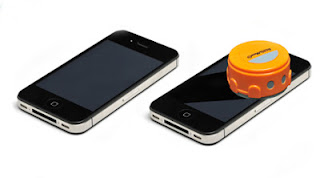DONALD RICHIE
APRIL 17, 1924 — FEBRUARY 19, 2013
‘Winter 1947… Tokyo lies deep under a bank of clouds which move slowly out to sea as the sun climbs higher. Between the moving clouds are sections of the city: the raw gray of whole burned blocks with the yellow of new cut wood and the shining tile of recent roofs, the reds and browns of sections unburned, the dusty green of barely damaged parks, and the shallow blue of ornamental lakes. In the middle is the palace, moated and rectangular, gray outlined with green, the city stretching to the horizons all around it.
The smoke of early household hearths, of newly renovated factories, of the waiting, charcoal burning taxis, rises and with it the freshness of late winter, the bitter yellow smoke of burning cedar shavings, the smell of breakfast: barley, sweet potato, roasted chestnuts. In the houses the bedding is folded into closets and tatami mats are swept.
18 April 2004… I wander into the future—Roppongi Hills, an enormous complex of high-rise buildings, including a mighty tower near where I used to live. This is the new Japan—gargantuan, expensive, and wasteful. There are, to be sure, concessions to tradition (trad but mod) in the transplantations of zelkova and gingko trees, all of them expensively mature, and in such touches of the Japanesque as a pocket garden here and a teahouse there. But Keyakizaka Street is lined with Louis Vuitton, Hermès, Gucci, Bulgari, and other high-priced merchants. These are matched by the kind of restaurants now called cutting-edge, which are far too expensive to eat in. People who work in the tower complain that they have to leave the Hills and walk far away to find a place to have an affordable lunch.’ — Donald Richie, The Japan Journals 1947-2004
During almost thirty years in Japan one of the greatest influences on my understanding of the country and its people came from another American who devoted more than a half-century to living in and writing about the country. Beginning on January 1, 1947 and continuing over the next sixty-six years, Donald Ritchie’s voice and eye penetrated every aspect of the Japanese experience. From the homeless and destitute to the honored and privileged elite, Mr Ritchie’s observations and insights penetrated everything from art to film and literature, on down to back alley porno shops and ten dollar prostitutes. As much as conversation with the celebrated Kurosawa Akira and Mishima Yukio, he was just as happy to sit on a park bench and talk with someone living in a cardboard box who never rose above the drudgery of manual labor.
Donald Richie was born in Lima, Ohio in 1924. After graduating from high school he traveled to New Orleans where he was working at the time of Japan’s attack on Pearl Harbor. He was spared the Army by entering an officer training program with the US Maritime Service where he served as an ensign-purser and medical officer during the war years. In 1946 he found work with the US Civil Service and on January 1, 1947 arrived in Japan. For the twenty-two year-old neophyte it was love at first sight.
Except for the years spent at Columbia University from 1949-53, and another four years in New York as Curator of Film at the New York Museum of Modern Art from 1969 to 1972, Richie spent the remainder of his life in Japan. His writing on Japan includes books, articles and stories too numerous to count. There would be little exaggeration in calling Mr Richie Japan’s single greatest cultural bridge to the west.
In his 1971 landmark book, The Inland Sea, the writer observes early in his travels…
‘A journey is always something of a flight. You go to reach, but you also go to escape. I am going to see the islands and all that they seem to promise, but, at the same time, I am going to escape the mainland and all that I already know it contains. I find less fault with Japan than with the century that is destroying this country along with all the others. Now, to escape is no sentimental gesture, it is survival.’
Standouts among the more than forty books by Donald Richie





